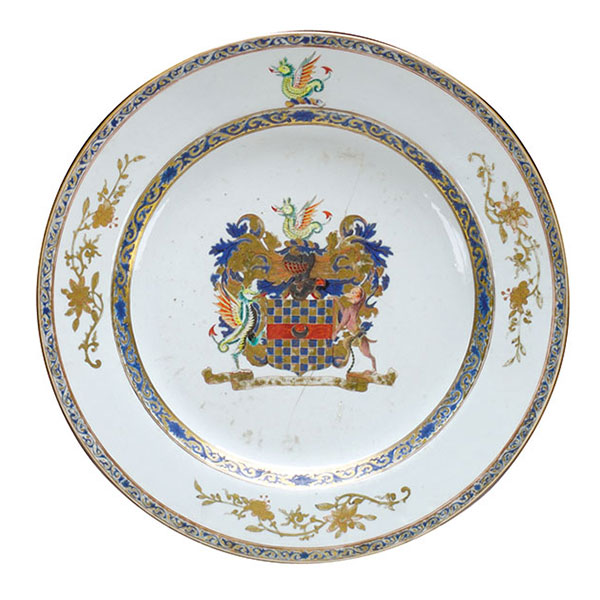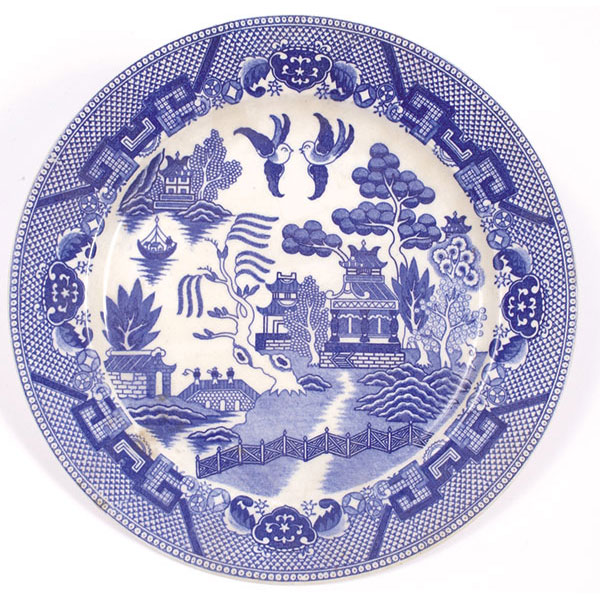Identification Guides
Chinese Export Porcelain Or China Trade Porcelain
Chinese potters made restrained, well-designed pottery or porcelain for use in their own country. Chinese porcelain was considered a rarity worth more than gold when the first few pieces were brought back to Europe by Marco Polo in the late thirteenth century. Europeans were not able to make porcelain until the eighteenth century when the secret was discovered at Meissen, Germany. The search for the secret of porcelain was one of the great projects for the kings of Europe.
During the eighteenth century, when trading with the Orient became more common, the ships of England and Holland brought back dishes that we now call Chinese export porcelain or China trade porcelain. The wares in demand by Europeans were very different from those made in Asia for Asians. The porcelain was not as fine in quality, and the design was distinctly European. Dishes with family coats of arms, figures dressed in European clothes, American flags, ships, biblical and mythological scenes, and local mottoes and symbols were ordered for the European and American markets.
The name “Chinese export porcelain” now also includes pieces made in the nineteenth and twentieth centuries.

